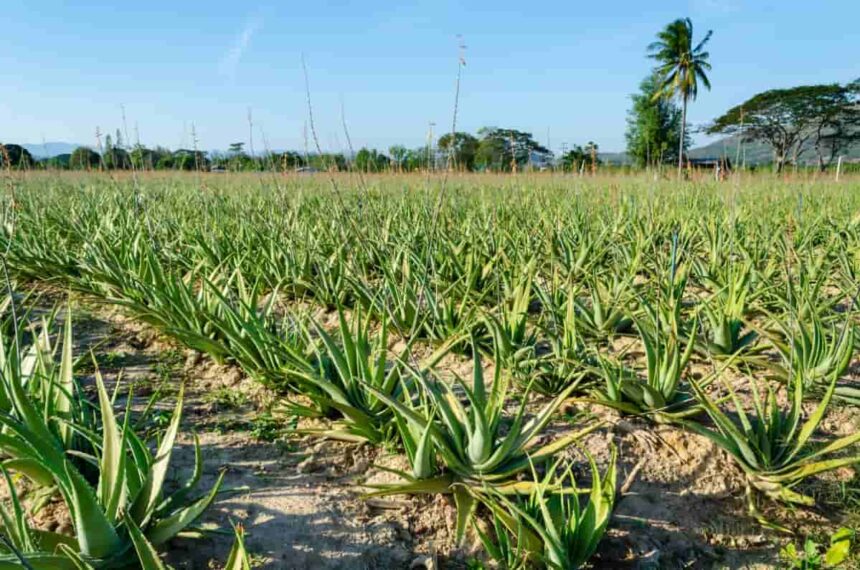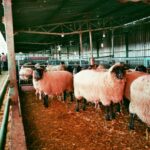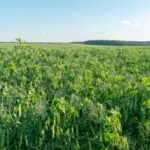Aloe vera farming is gaining popularity in South Africa due to the plant’s versatility and demand in industries like cosmetics, health, and food processing. While aloe vera is hardy and requires minimal maintenance, mistakes in its cultivation can significantly impact yield and quality. Here are 10 common mistakes South African farmers make in aloe vera farming and practical solutions to avoid them.
1. Choosing the Wrong Variety
Not all aloe vera varieties are suitable for commercial farming. Many farmers plant inferior varieties that lack the medicinal and industrial properties needed for market demand.
Solution: Select high-quality varieties such as Aloe barbadensis Miller, which is known for its high gel content and commercial value. Consult agricultural extension services or nurseries for certified planting material.
2. Planting in Unsuitable Soil
Aloe vera requires well-drained soil with a pH of 6.0–8.0. Many farmers make the mistake of planting in heavy clay soils or waterlogged areas, leading to root rot.
Solution: Choose sandy or loamy soil with good drainage. If planting in clay soil is unavoidable, create raised beds or mix sand into the soil to improve drainage.
3. Overwatering
Aloe vera is drought-tolerant and does not require frequent watering. Overwatering can cause root rot, fungal diseases, and plant death.
Solution: Water aloe vera sparingly, especially during the rainy season. Water the plants only when the soil is completely dry, typically once every two weeks.
4. Ignoring Weed Control
Weeds compete with aloe vera for nutrients, water, and sunlight, reducing growth and yield. Some farmers overlook regular weeding, which can also attract pests.
Solution: Weed your aloe vera fields regularly, especially during the early stages of growth. Mulching around the plants can help suppress weed growth and retain soil moisture.
5. Planting Too Densely
Overcrowding aloe vera plants reduces airflow and increases competition for nutrients. It can also create a breeding ground for pests and diseases.
Solution: Maintain proper spacing between plants, ideally 50–60 cm apart in rows that are 60–70 cm apart. Adequate spacing ensures healthy growth and makes maintenance easier.
6. Neglecting Pest and Disease Management
Although aloe vera is resistant to many pests, it is not immune. Common issues include aphids, mealybugs, and fungal infections. Farmers who neglect pest and disease monitoring risk losing their crops.
Solution: Inspect your plants regularly for signs of pests or diseases. Use organic pest control methods like neem oil or insecticidal soaps to address infestations. For fungal diseases, ensure proper drainage and avoid waterlogging.
7. Harvesting Incorrectly
Improper harvesting techniques, such as cutting leaves too close to the base or harvesting immature leaves, can damage the plant and reduce its lifespan.
Solution: Harvest mature leaves that are 18–24 months old. Use a sharp knife to cut the leaves, leaving at least three to four leaves on the plant for continued growth.
8. Neglecting Post-Harvest Care
Many farmers fail to handle harvested aloe vera properly, leading to contamination or loss of gel quality.
Solution: Process aloe vera leaves immediately after harvesting to preserve their gel quality. Store the harvested leaves in a cool, dry place if immediate processing is not possible.
9. Lack of Market Research
Some farmers start aloe vera farming without understanding market demand, pricing, or buyer requirements, leading to unsold produce.
Solution: Conduct thorough market research before starting your farm. Identify potential buyers, such as cosmetic manufacturers, herbal medicine producers, and juice companies. Build relationships with buyers and understand their quality standards.
10. Skipping Soil Fertility Management
Aloe vera requires minimal nutrients, but poor soil fertility can result in stunted growth and low yields. Farmers often skip soil testing and fail to replenish depleted nutrients.
Solution: Test your soil periodically to determine nutrient levels. Use organic fertilizers like compost or farmyard manure to improve soil fertility. Avoid excessive use of chemical fertilizers, as aloe vera is sensitive to salts.
Aloe vera farming has great potential for South African farmers, but success depends on avoiding common mistakes. By selecting the right variety, maintaining proper soil conditions, managing pests and diseases, and conducting market research, you can ensure high-quality yields and profitability. With proper planning and care, aloe vera farming can become a sustainable and rewarding venture.
Join 'Farmers Mag' WhatsApp Channel
Get the latest Farming news and tips delivered straight to your WhatsApp
CLICK HERE TO JOIN






